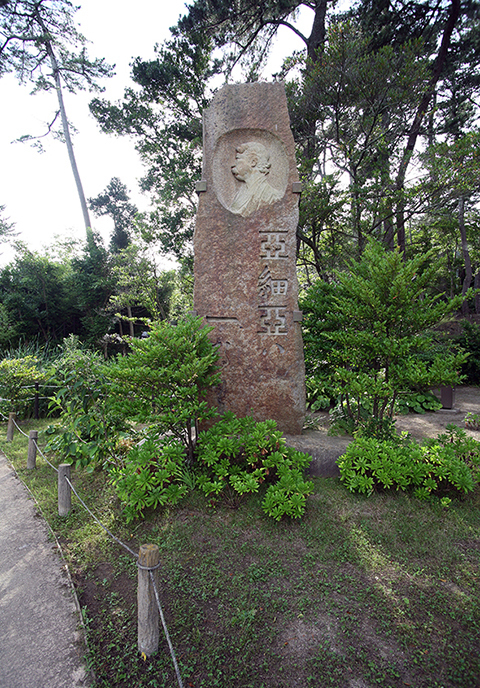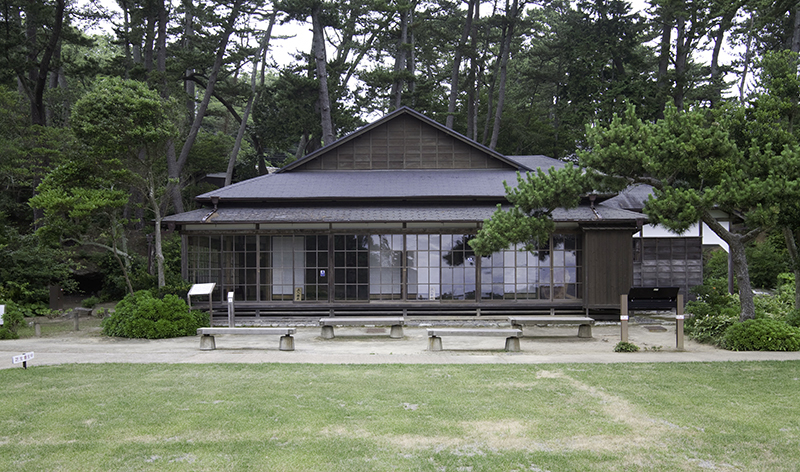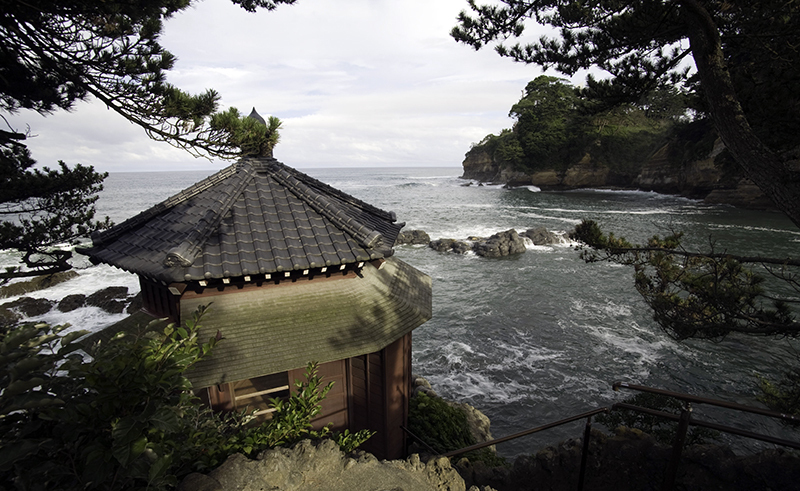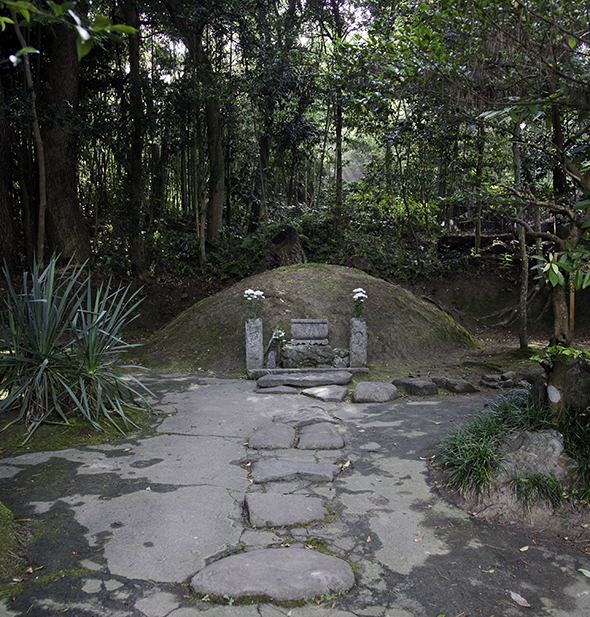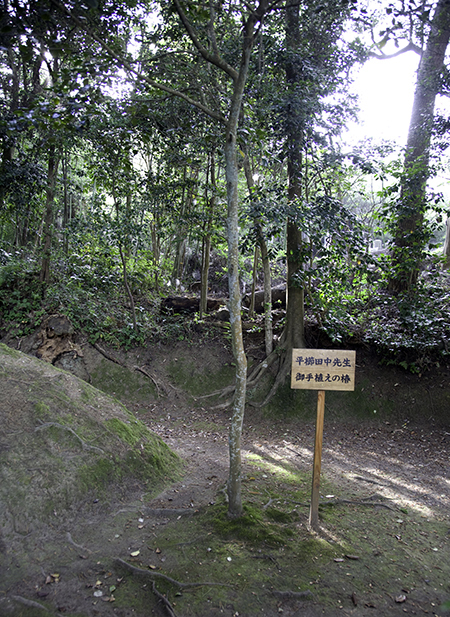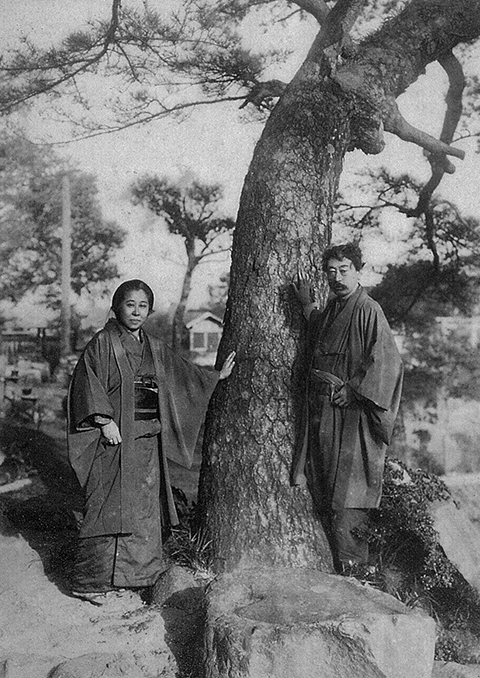The monument on which Tenshin's words "Asia is one" are engraved stands on the garden of Izura Institute of Art & Culture, Ibaraki University. Tenshin who studied the Chinese classics and had deep knowledge about the West put his wishes into the words. The words were written by Taikan Yokoyama who respected Tenshin throughout his life, and Takezo Shinkai who was a fellow of the Japan Art Institute engraved Tenshin's profile on the monument.

Izura Institute of Art & Culture, Ibaraki University
Japan Art Institute
Tenshin Okakura was born in Yokohama, studied Chinese and Japanese books written in classical Chinese, and mastered the English language at a private school. He entered Tokyo Kaisei-sho (present-day University of Tokyo), met Ernest Fenollosa, and worked as Fenollosa's assistant and collected Japanese and Asian art works in 1881. Tenshin, along with Fenollosa and others, toured Europe and North America in 1886 in order to found Tokyo Fine Arts School (present-day Tokyo University of the Arts). Tenshin realized the difference between the East and West, and recognized the values of Japanese and Asian art again through those experiences.
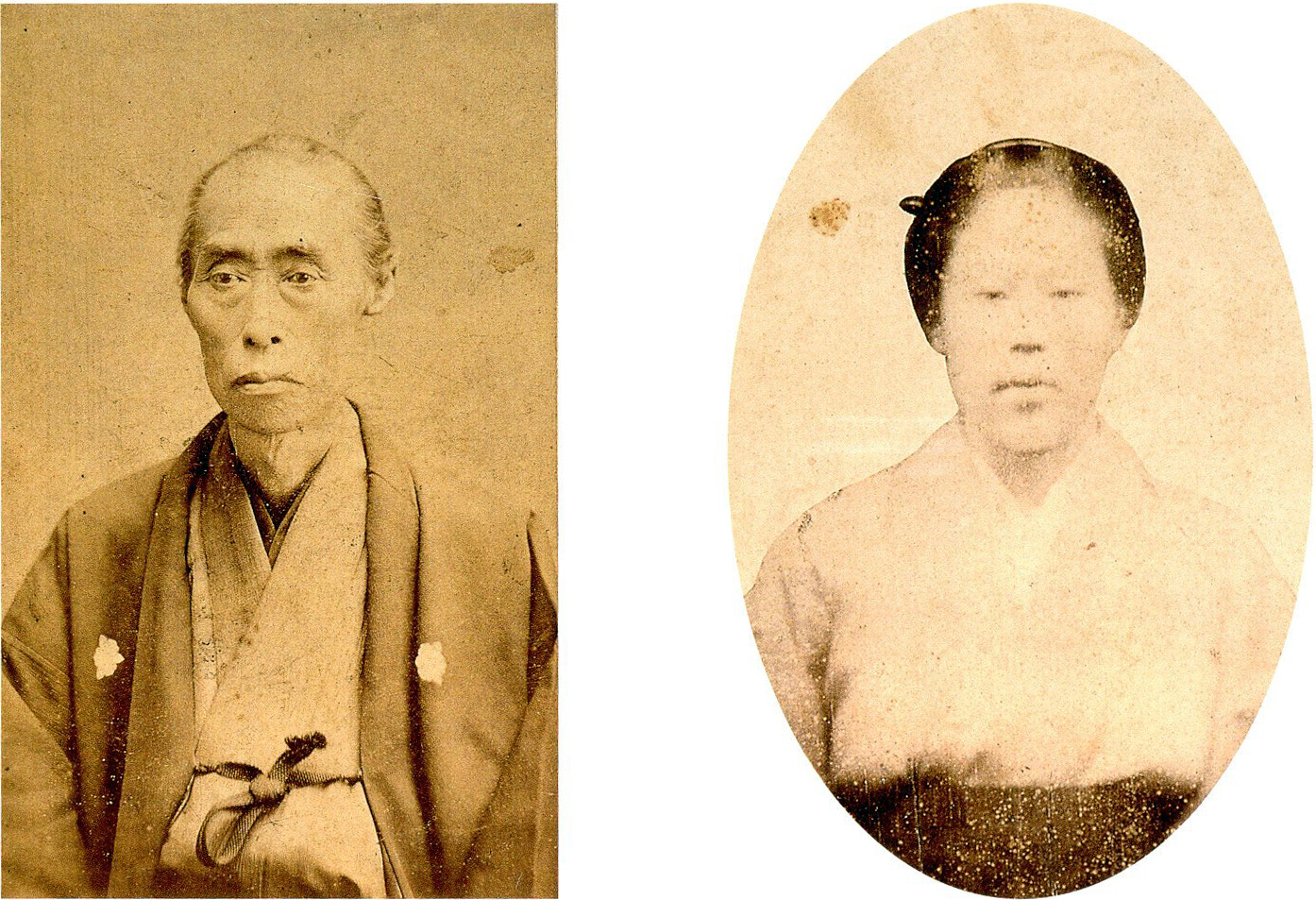
Kan-emon and Kono Okakura (Tenshin's father and mother) (Courtesy of Tenshin Memorial Museum of Art, Ibaraki)
Kan-emon (Kaku-emon), a former clansman of the Fukui domain, stayed in Edo, and worked as a clerk at "Ishikawa-ya," a firm in Yokohama which was run by the Fukui domain. Although Kono gave birth to her eldest son, Koichiro (1860-1875), second son, Tenshin, third son, Genzaburo (died young), fourth son, Yoshisaburo, and eldest daughter, Choko, she died suddenly due to puerperal fever when she was delivered of the eldest daughter.
Tokyo Fine Arts School was founded in 1890 after being integrated with "Kobu Bijutsu-bu," which was attached to the Imperial College of Engineering (present-day University of Tokyo, Faculty of Engineering). The foundation was decided based on an investigation report about art education in Europe and North America, which was brought by an inquiry committee that visited Japan with Fenollosa in 1886-87. Although Arata Hamao served as an acting principal (the first principal) of Tokyo Fine Arts School, Tenshin, the second principal, was the first principal in effect. Although Tenshin strived to revive Asian art at Tokyo Fine Arts School, he resigned as the principal due to the disturbance in the school (1898), and also stepped down as the art director of Imperial Museum (present-day Tokyo National Museum). All teachers except those at the Wester-style painting department resolved to leave the school when Tenshin resigned, but a new principal persuaded them not to resign. As a result, Gaho Hashimoto, Shisui Rokkaku, Taikan Yokoyama, Kanzan Shimomura, Kogyo Terasaki, Tomoto Kobori, Shunso Hishida and Kogetsu Saigo, along with Tenshin, left the school.
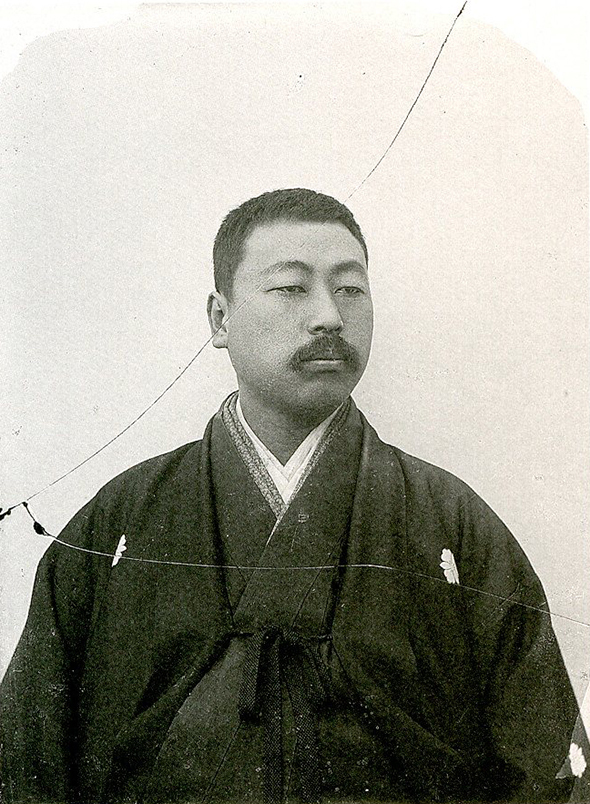
Tenshin Okakura when he was the principal of Tokyo Fine Arts School (around 1895-96; Courtesy of Tenshin Memorial Museum of Art, Ibaraki)
Tenshin, along with other teachers who left the school, founded the Japan Art Institute on the grounds of his residence at Yanaka, Shitaya-ku, in 1898. Tenshin expanded his activities, including visit to India and a job at the Chinese and Japanese Art Department, Museum of Fine Arts, Boston, but he had difficulties in running the Japan Art Institute, so moved the first department of the Japan Art Institute (painting) and his house to Izura, Ibaraki Prefecture, which he called "Barbizon of the East" in 1906. His life in Izura was hard, and was hard-pressed to get by in just several years, so the activities of the Japan Art Institute was gradually reduced. Shunso Hishida left Izura just one-and-a-half years after in order to treat his eye disease, and subsequently Taikan Yokoyama moved his activity bases to Tokyo. Although Tenshin became an examiner for the public exhibition sponsored by the Ministry of Education in 1907, the director of the Chinese and Japanese Art Department, Museum of Fine Arts, Boston, in 1910, and an examiner for the Bunten exhibition in 1912, he died at the age of 50 in 1913 due to illness. He was buried at the Somei cemetery in Komagome, and some of his ashes at Izura. His tomb was made in accordance with his wishes that were put into his death poem and another poem, "An Injunction," written in English. Tenshin was a remarkable cosmopolitan who lived his life intensely through the turbulent time of the end of the Edo to Meiji Periods, and was one of the earnest protectors of Japanese art.
After Tenshin's death, the Japan Art Institute was revived at Yanaka Sansaki-zaka Minami-cho (present-day Yanaka 4-chome) in 1914 through efforts of Taikan Yokoyama, Kanzan Shimomura and others. The spring Inten exhibition and the revived autumn Inten exhibition, which are annually held, still draw many art lovers.
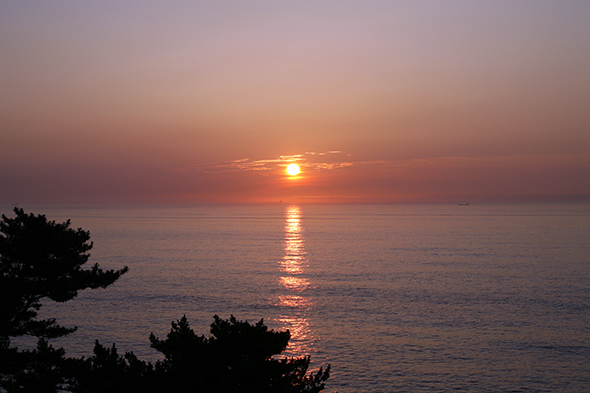
With what kind of feelings did Tenshin see the sun rising above the horizon at Izura?
Tenshin's former residence was designed by himself, and built by Genzo Ogura, a master carpenter in Hirakata in 1904. There was "Kanpo-ro," a Japanese-style restaurant that served abalone cuisine, before Tenshin moved in this place. It is said that Tenshin's residence was built using the restaurant's dismantled lumber. The floor space of his residence was about 205 square meters at that time, and later it was expanded in 1905. Now, Tenshin's study that was located on the west of the residence and a bathroom on the east are removed.

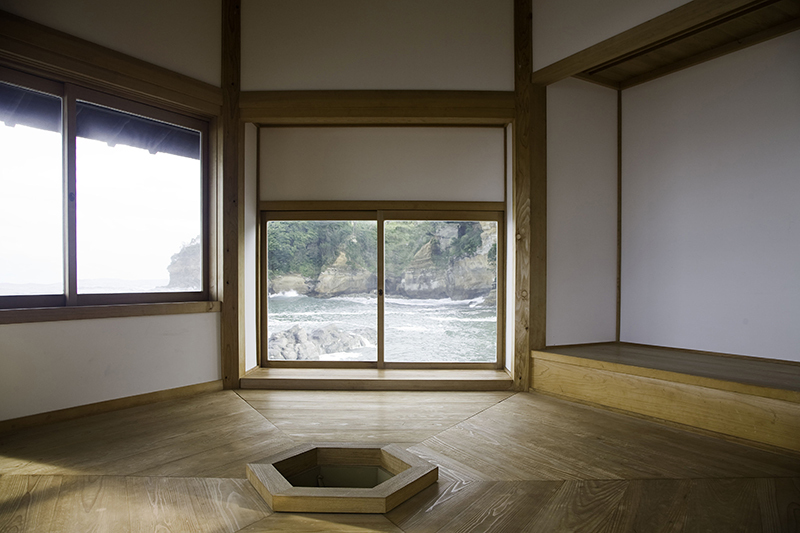
Izura Rokkaku-do, which was named "Kanran-tei," is an arbor that is also used as a Buddhist temple and tea-ceremony room. It calmly stands facing the rough Pacific Ocean, and remind us of Tenshin who used to sit on the floor, read books, and be lost in contemplation.

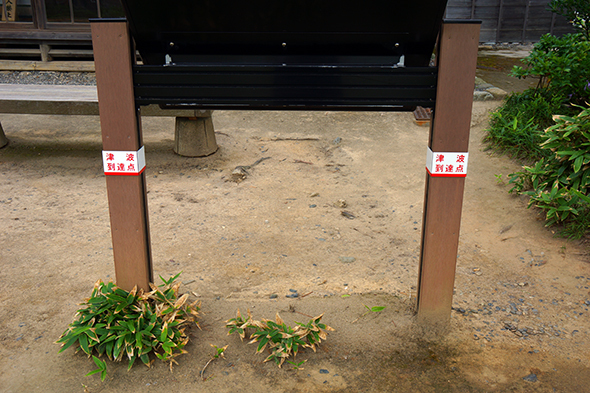
The tsunami caused by the Great East Japan Earthquake in 2011 reached above the floor of the residence, and destroyed many buildings, including Rokkaku-do.

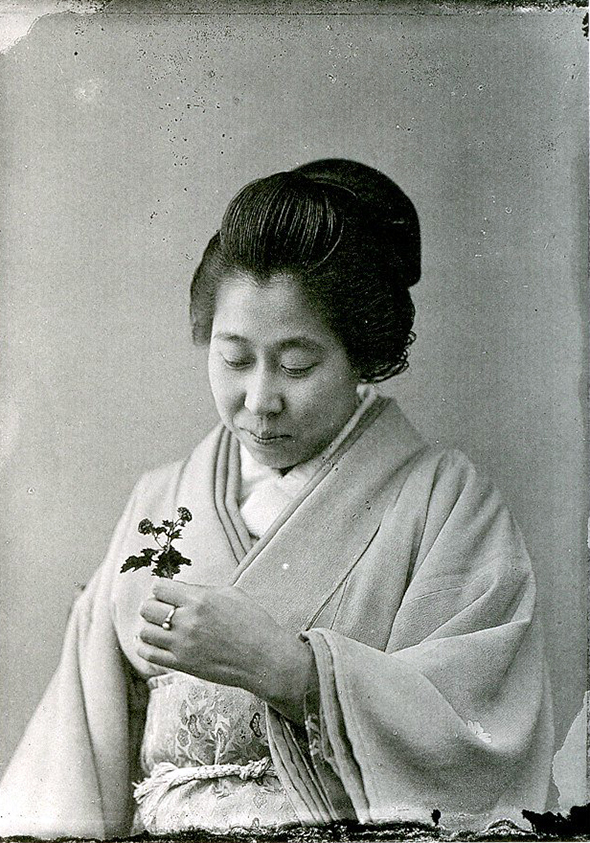
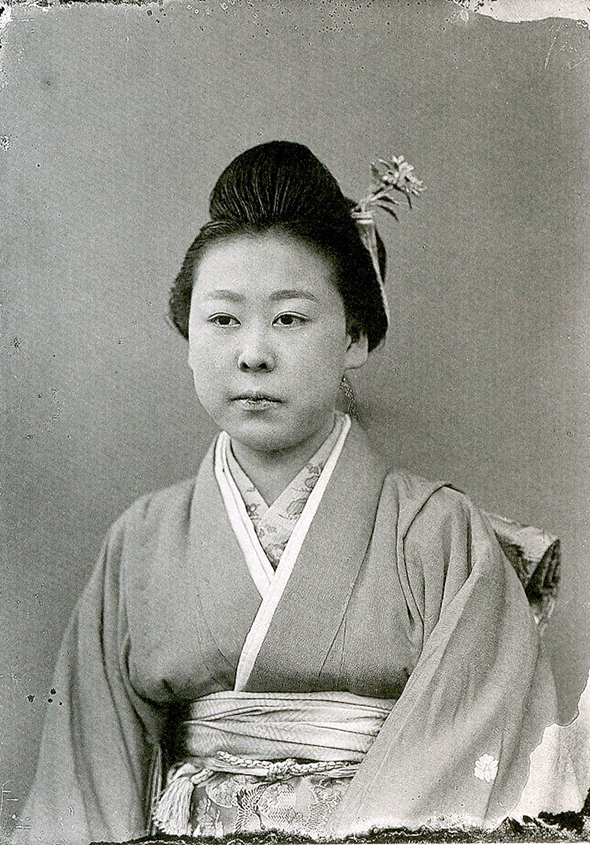
Motoko, a wife of Tenshin, and Komako, an eldest daughter (Courtesy of Tenshin Memorial Museum of Art, Ibaraki)

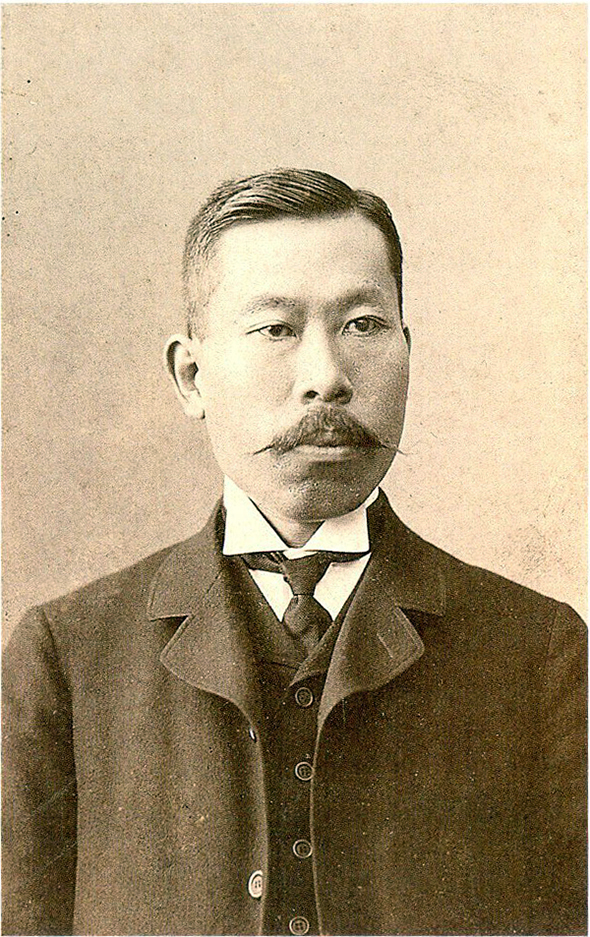
Yoshisaburo Okakura (1868-1936), a younger brother of Tenshin, graduated from the humanities special course, the Imperial University (present-day University of Tokyo), worked as a teacher at the Tokyo Higher Normal School, and edited "Eibungakusosho," or library of English literature, and New Japanese-English Dictionary, which were published by Kenkyusha. He earnestly supported Tenshin. (Courtesy of Tenshin Memorial Museum of Art, Ibaraki)



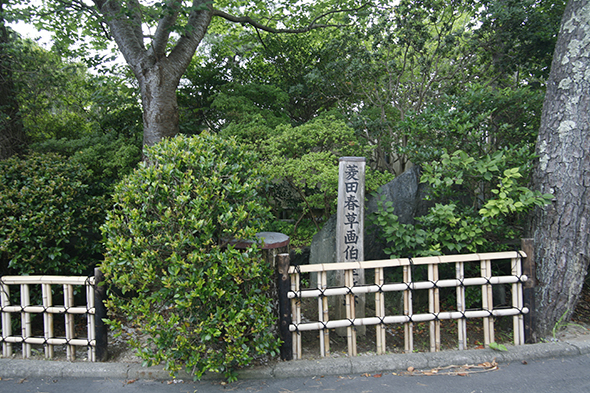
In the vicinity of Tenshin's former residence, there is the site where the house of Shunso Hishida who, along with Tenshin, moved to Izura previously stood. Shunso studied under Gaho Hashimoto at Tokyo Fine Arts School, along with Taikan, developed "Moro-tai," or hazy style, that went beyond conventional expressions with line drawing, and created excellent paintings, such as "Ochiba," or fallen leaves, which utilized the atmospheric perspective. He died young at the age of 36.
The monument on which Tenshin's words "Asia is one" are engraved stands on the garden of Izura Institute of Art & Culture, Ibaraki University. Tenshin who studied the Chinese classics and had deep knowledge about the West put his wishes into the words. The words were written by Taikan Yokoyama who respected Tenshin throughout his life, and Takezo Shinkai who was a fellow of the Japan Art Institute engraved Tenshin's profile on the monument.

















